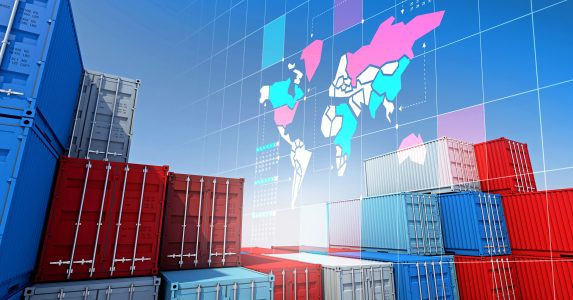Global trade, once the defining feature of modern economic progress, is increasingly becoming the stage for confrontation rather than cooperation. After decades of globalization, where free markets and open borders were the ultimate goals, the pendulum now appears to be swinging in the opposite direction. Tariffs, protectionism, and “domestic-first” policies are making a comeback. The world is, it seems, entering a new era of economic nationalism—one that could reshape the global order as profoundly as the globalization wave that preceded it.
The Return of Tariff Wars
The 21st century began with optimism for global trade. Free trade agreements like NAFTA, the EU single market, and the WTO’s expansion seemed to guarantee a future of shared prosperity. But cracks began to form when global supply chains, once hailed as symbols of efficiency, started revealing their vulnerabilities.
The 2018–2019 trade war between the United States and China was the first major turning point. What started as a dispute over intellectual property and trade imbalances escalated into a full-blown tariff battle that disrupted markets, shifted production bases, and redefined global alliances. Even as those tensions eased, the political sentiment behind them—economic self-interest above global cooperation—did not disappear.
Today, tariffs are not just policy tools but political statements. From Washington to Brussels, from Beijing to New Delhi, governments are asserting control over industries deemed vital to national security—whether it’s semiconductors, rare earth minerals, or clean energy technologies.
From Globalization to Strategic Protectionism
For decades, globalization promised efficiency: goods made where costs were lowest, labor outsourced where it was cheapest, and supply chains spanning continents. But the pandemic, geopolitical conflicts, and technological rivalries exposed the fragility of that system.
When borders closed and shipments stalled, nations realized that dependence on distant suppliers carried real risks. The response was swift and clear—strategic protectionism. Governments began investing in domestic manufacturing, especially in sectors critical to energy, defense, and technology. The United States’ CHIPS and Science Act, for example, aims to bring semiconductor production back home, while the European Union’s “strategic autonomy” agenda seeks to reduce reliance on non-European supply chains.
Even developing economies are rethinking their strategies. India’s “Atmanirbhar Bharat” (self-reliant India) initiative, Japan’s reshoring incentives, and China’s “dual circulation” model all reflect the same instinct: self-sufficiency equals security.
The Political Undercurrent: Populism Meets Economics
Economic nationalism is not just about trade—it’s about politics. Populist leaders across the globe have found that protectionist rhetoric resonates with voters who feel left behind by globalization. Factories that closed, jobs that moved overseas, and communities hollowed out by automation all became rallying points for nationalist economic movements.
In the United States, the appeal of “America First” politics transcends party lines. In Europe, similar sentiments have fueled the rise of right-wing and left-wing populist parties alike. Even traditionally globalist powers like Germany and Japan are reconsidering their dependencies, driven by the realization that economic vulnerability can quickly become political weakness.
Winners and Losers in the New Trade Order
As nations turn inward, global companies are caught in the middle. The shift toward protectionism has forced businesses to diversify supply chains, increase regional production, and navigate an increasingly complex regulatory landscape. While some multinational corporations are adapting through localization strategies—producing where they sell—others face higher costs and reduced efficiencies.
Emerging markets, once the prime beneficiaries of offshored production, may suffer as reshoring gains momentum. However, countries that can position themselves as strategic partners—for example, Vietnam, Mexico, and Indonesia—stand to gain from the new multipolar trade map. These nations are becoming the “in-between economies” that balance efficiency with political safety.
Energy, Technology, and the New Frontlines
The new economic nationalism isn’t limited to tariffs on goods—it extends to technology, energy, and data. Access to critical technologies like AI, quantum computing, and microchips has become a matter of national security. Similarly, energy independence—once dismissed as an outdated goal—is now a global priority in the wake of geopolitical conflicts like Russia’s invasion of Ukraine.
Nations are no longer just trading for profit—they’re trading for resilience. The global economic system, once unified under efficiency, is fragmenting into regional blocs bound by shared interests and political trust. The U.S. and its allies are focusing on “friend-shoring”—redirecting trade toward trusted partners—while China expands its influence through the Belt and Road Initiative.
The Global Economy in Flux
This shift toward economic nationalism is not without consequences. Reduced interdependence may bring stability in some areas, but it also risks slowing innovation and growth. The World Bank estimates that persistent trade fragmentation could reduce global GDP by up to 5% over the next decade.
Moreover, the reintroduction of tariffs and trade barriers may stoke inflation, drive up costs for consumers, and create inefficiencies in global markets. The winners of this new era will likely be those who can balance self-sufficiency with smart collaboration—nations that protect their strategic industries without entirely shutting out the world.
The Future: A Balancing Act Between Protection and Progress
The question is no longer whether globalization is ending, but what comes after it. The new world order may not be defined by pure nationalism or full globalization but something in between—a hybrid model where trade is guided as much by politics as by profit.
Countries will continue to cooperate, but selectively. Supply chains will be shorter, regional, and politically aligned. Economic alliances will form around ideology as much as opportunity. The global map of commerce will look less like a web and more like a cluster of fortresses, connected yet cautious.
Conclusion: A New Economic Reality
The rise of economic nationalism marks a turning point in history. The ideals of free trade and borderless markets that dominated the late 20th century are giving way to a more fragmented but resilient model—one where sovereignty, strategy, and security take precedence.
Whether this new era leads to sustainable prosperity or deepened division will depend on how nations balance competition with cooperation. In a world where every tariff tells a story and every trade deal signals allegiance, the rules of global commerce are being rewritten in real time.
For policymakers, investors, and citizens alike, one truth stands out: the age of easy globalization is over—and what comes next will test not just economies, but the very idea of global unity itself.



